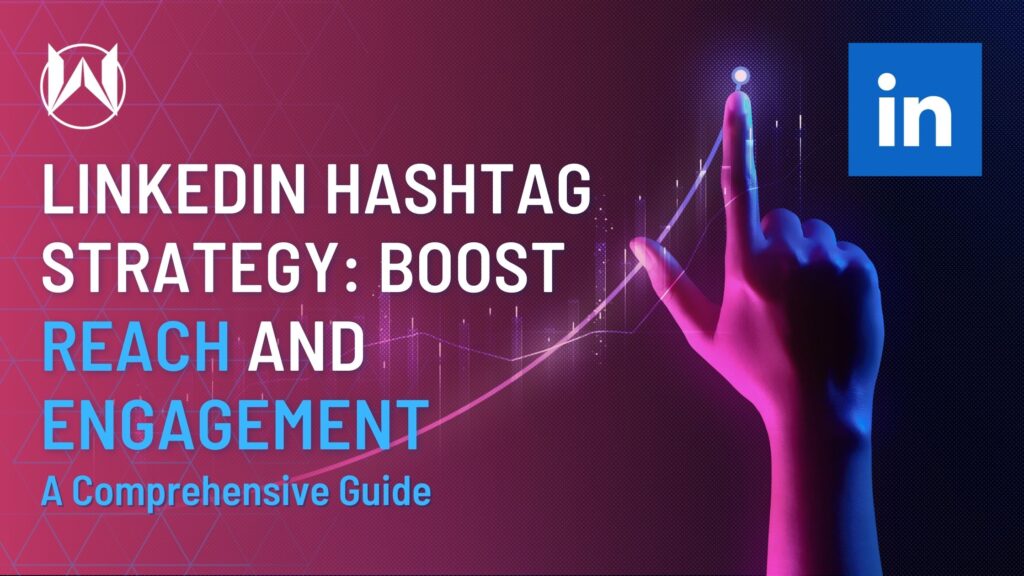Mastering LinkedIn Hashtags
Hashtags are essential in increasing your content’s visibility and driving engagement on social media platforms, including LinkedIn. A comprehensive hashtag strategy is vital to make the most out of your LinkedIn posts. This article will explore a holistic approach to hashtag usage on LinkedIn, covering research, categorization, optimization, performance analysis, and community building.
Introduction
LinkedIn, a professional networking platform, has become essential for businesses and individuals to connect, collaborate, and showcase their expertise. Implementing a robust hashtag strategy can increase content discoverability, improve audience engagement, and drive meaningful interactions with your target audience while strengthening your brand identity on LinkedIn.
Research and Identify Relevant Hashtags
To maximize your content’s reach, you need to find hashtags that resonate with your target audience and align with your industry:
a. Utilize hashtag research tools: Hashtagify (
hashtagify.me) is a popular tool for discovering hashtags related to your content, industry, and target audience. Tools like RiteTag and Keyhole can help you identify trending and high-performing hashtags.
b. Monitor competitors and influencers: Keep a close eye on competitors and influencers in your niche to identify effective hashtags they use. Observe how they engage with their audience and analyze which hashtags contribute to their success.
c. Periodically update your hashtag list: Stay current with trending topics and popular keywords by updating your hashtag list regularly. Social media platforms and user interests evolve constantly, so it’s essential to remain adaptable to maintain your content’s relevance.
d. Leverage LinkedIn’s suggestions: LinkedIn often suggests relevant hashtags when you create a new post. Review these suggestions and incorporate them into your content where appropriate.
Example of Trending Hashtags on LinkedIn in 2023:
- #innovation (38,673,144 followers)
- #management (35,871,964 followers)
- #digitalmarketing (27,291,348 followers)
- #technology (26,347,886 followers)
- #creativity (25,114,957 followers)
- #futurism (23,402,629 followers)
- #startups (21,168,624 followers)
- #marketing (20,304,916 followers)
Keep in mind that these popular hashtags can change over time, so it’s crucial to stay updated on the latest trends to maximize your content’s visibility and reach on the platform.
Categorize Your Hashtags
Organize your hashtags into the following categories to create a compelling mix:
a. 1-2 Broad hashtags: Viral (over 1M posts), but ensure they are relevant to your content. Using broad hashtags can help you tap into a larger audience, increasing the likelihood of your content being discovered.
b. 2-4 Popular hashtags: 100K-1M posts directly related to your content and niche. Popular hashtags are more specific than broad hashtags but still have many users engaging with them. This category is essential for reaching a more targeted audience.
c. 3-5 Niche-specific hashtags: 10K-100K posts focused on your target audience’s interests and needs. Niche-specific hashtags allow you to connect with a smaller, more engaged community, resulting in higher-quality interactions and conversions.
d. 2-3 Branded hashtags: Unique to your brand for consistent brand identity and tracking user-generated content. Branded hashtags can help you consolidate your presence on LinkedIn, making it easier for users to find and engage with your content.
Optimize the Number of Hashtags
Striking the right balance with hashtag usage is crucial for LinkedIn:
a. Use 10-15 hashtags per post: Prioritize quality and relevancy over quantity. Overusing hashtags can make your content appear spammy, while using too few may limit your reach.
b. Keep in mind that LinkedIn works best with fewer hashtags: Unlike platforms like Instagram, LinkedIn’s algorithm favors posts with a smaller number of hashtags. Be mindful of platform-specific hashtag limits and best practices to ensure optimal performance.
c. Place hashtags strategically: Add hashtags at the end of your post or within the post content. Experiment with different placements to determine what works best for your audience and the platform.
Test and Analyze Hashtag Performance
To continuously improve your hashtag strategy, monitor and analyze their performance:
a. Keep track of engagement, reach, and conversions driven by your hashtags using tools like Sprout Social or Hootsuite. These tools offer detailed analytics and insights to help you understand the impact of your hashtag strategy on your content’s performance.
b. Experiment with different combinations and track the performance of each set. By testing various hashtag combinations, you can identify the most effective hashtags for your content and refine your strategy accordingly.
c. Adjust your hashtag strategy based on the analysis to focus on the most effective hashtags. Continuously reviewing and updating your approach will help you stay ahead of the competition and ensure your content remains relevant to your target audience.
Encourage User-Generated Content and Community Building
Foster a sense of community around your brand by promoting user-generated content:
a. Promote your branded hashtags and encourage your audience to use them when sharing relevant content. Motivating users to incorporate your branded hashtags creates opportunities for increased visibility, engagement, and brand loyalty.
b. Engage with users who utilize your branded hashtags and share their content on your profile (with permission). This showcases your appreciation for user-generated content and helps build relationships with your audience, further strengthening your community.
c. Collaborate with influencers, thought leaders, and other professionals in your niche to co-create content, host webinars, or participate in LinkedIn Live sessions. Leveraging their expertise and reach can help you expand your network and amplify your brand’s message.
Conclusion – Unlocking Hashtag Potential
By implementing this holistic hashtag strategy, you’ll increase content discoverability, improve audience engagement, and drive meaningful interactions with your target audience while strengthening your brand identity on LinkedIn. Remember to stay adaptable and continuously refine your approach based on performance data and industry trends.
With the right balance of research, categorization, optimization, and community building, you’ll unlock the full potential of hashtags on LinkedIn. In addition to this guide, keep an eye on LinkedIn’s updates and new features as the platform continually evolves to offer more opportunities for businesses and individuals to connect and grow.
By following these tips and developing a well-rounded hashtag strategy, you can effectively utilize LinkedIn to elevate your brand, expand your network, and establish yourself as a thought leader in your industry.

